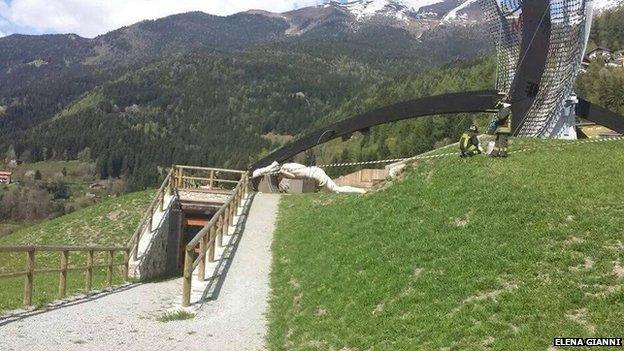Life of Pope John Paul II
- Published
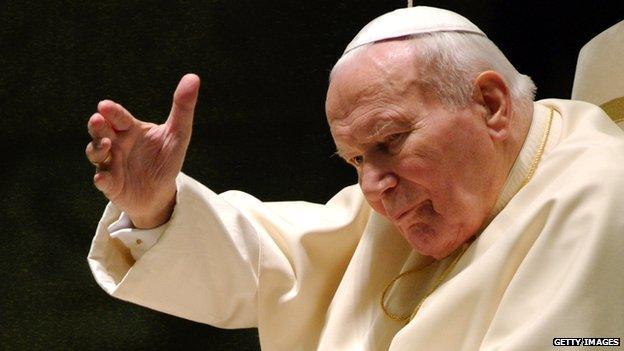
John Paul II led the Catholic Church for more than a quarter of a century
John Paul II, who died at the age of 84 in April 2005, was declared a saint in 2014 alongside Pope John XXIII at a ceremony in the Vatican.
Karol Wojtyla's election as Pope in 1978 stunned the Catholic world. Not one expert had tipped the 58-year-old bishop of Krakow for the top job.
His stand against Poland's Communist regime had brought him respect. But he was not part of the Vatican "in-crowd" and, above all, he was the first non-Italian pope in more than 450 years.
He went on to become one of the most familiar faces in the world. His papal odyssey covered more than 120 countries and he earned himself the reputation of an international fighter for freedom.
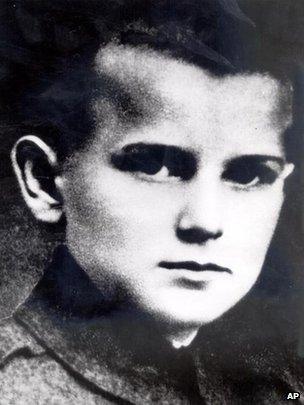
John Paul excelled at sports from a young age
But, to his critics, John Paul II was the arch-conservative - an autocrat whose pronouncements on abortion, contraception and women's rights have had an effect on millions of lives.
Theologian in hiding
The youngest Pope of the 20th Century was born near Krakow, Poland, in 1920. As a young man he excelled at sports, including soccer and skiing. He also had a great love for the theatre and, at one time, seriously considered becoming an actor.
World War II and the Nazi occupation saw Karol Wojtyla working as a labourer. He studied theology from 1942 and was forced into hiding in 1944 following a crackdown on religious teaching.
Continuing his studies after the war, he was ordained a priest in 1946. Rapid promotion followed, and by 1964 he was archbishop of Krakow. Three years later he was a cardinal.
Throughout, he had continued his theological studies and was often seen in Rome, but no more so than dozens of other cardinals from distant and obscure dioceses.

Key dates

"The Year of the Three Popes" came in 1978. Pope Paul VI died at the age of 80. His successor, elected in a single day, took the name John Paul in memory of his two predecessors. Thirty-three days later he, too, was dead.
Once again the College of Cardinals conducted the centuries-old ritual of a papal election in the Sistine Chapel. After two days of deliberation, Karol Wojtyla became the next successor to St Peter.
Taking the name John Paul II, the new pontiff signalled a new era in Catholic affairs. He was dynamic and approachable, an instantly recognisable leader for the world's largest Christian community.
Above all, he travelled. On an early trip to Ireland, he appealed to the men of violence to return to the ways of peace. American Catholics saw him reject all calls for a change in moral teaching.
Ecumenical services
But his insistence on getting close to crowds almost led to his death in May 1981. Leaning out of his vehicle in St Peter's Square, he was shot and seriously wounded by a Turkish fanatic. After a long recovery, he visited and forgave his would-be assassin Mehmet Ali Agca.
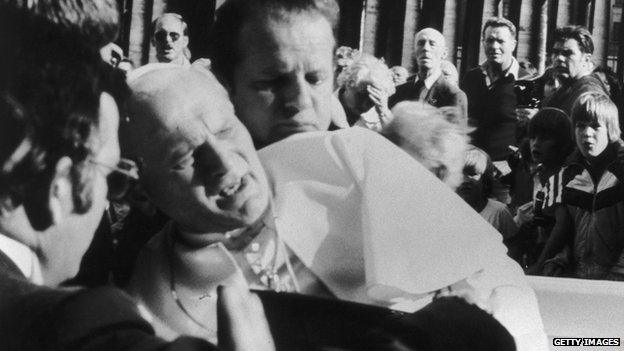
Moments after the pope was shot by Mehmet Ali Agca in 1981
In 1982 he visited Britain. This was a historically charged trip made all the more important as it occurred during the Falklands crisis.
The Pope appealed for a peaceful resolution to the Falklands issue, a plea which was mirrored in a visit to Argentina days later. He participated in a number of ecumenical services with the Church of England, something unthinkable in previous eras.
Huge crowds, Catholic and Protestant, attended his every move. The talk was of union between Rome and Canterbury - a union which today seems as far away as ever, because of the issue of women priests.
Influential in eastern bloc
With the break-up of the Soviet bloc, relations between the Kremlin and the Vatican gained a new significance. In 1989, Mikhail Gorbachev visited Rome, the first time a Soviet leader had crossed the threshold of St Peter's.
"The Pope," he told his wife Raisa at the time, "is the pre-eminent moral authority in the world. But he's still a Slav." The understanding between the two men undoubtedly eased the way to democracy in the eastern bloc.
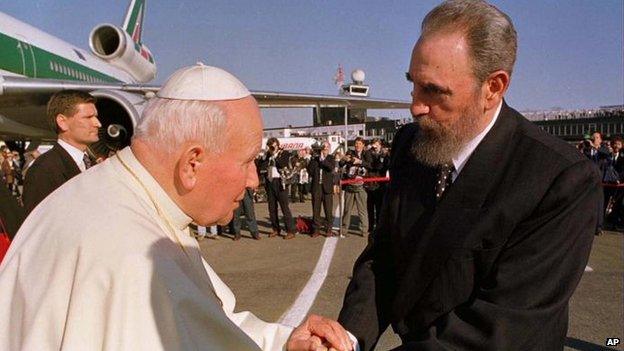
John Paul was well-travelled, meeting many world leaders including Cuba's Fidel Castro in 1998
The collapse of Communism coincided with increasing demands in the West for a compromise on religious teaching. By consistently rejecting these calls, John Paul effectively closed the debate before it had started.
He was a complex man. While calling for action to combat world poverty, he insisted that contraception was morally unacceptable. He said that he wanted to improve the status of women while writing that motherhood should be a woman's natural aspiration.
He frequently criticised the liberalism which he saw all around him. Homosexuals incurred both his wrath and his pity, to the dismay of campaigners for gay rights.
Although dogged by ill-health in later years, the journeys continued - to Cuba, Nigeria, former Yugoslav republics and the Holy Land.
In 2002, the Pope made an emotional and nostalgic final visit to his homeland, flying over his birthplace in Wadowice and visiting the graves of his parents and brother in Krakow.
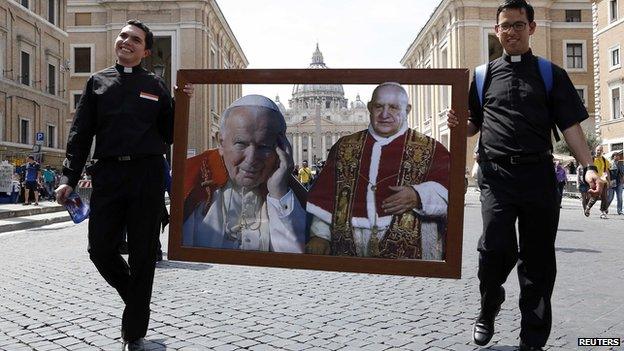
After his death in 2005, Pope John Paul II (left) was put on the fast-track to sainthood
Once again, vast crowds turned out to see the man many Poles regarded as a living saint and who had, they believed, played a key role in liberating them from Communism.
John Paul's reign also saw other radical changes throughout the world - including the emergence of Aids.
And he had to deal with an increasing number of sex abuse scandals which beset the Catholic Church. Much of the abuse, or its alleged cover-up, occurred while John Paul was Pope, and the Church was criticised for not doing enough to punish those found responsible.
On a personal level, while there is no suggestion he broke his vow of celibacy, the Pope had a number of female friends, including psychiatrist Wanda Poltawska and Polish-born American philosopher Anna-Teresa Tymieniecka.
Hundreds of letters and photographs shown to the BBC revealed a close relationship with Ms Tymieniecka and shed new light on his emotional life.
Throughout his reign, his work to maintain the dignity of mankind against what he saw as the dangers of modern life, together with his personal magnetism, made Pope John Paul II one of the most remarkable men of his times.
- Published27 April 2014
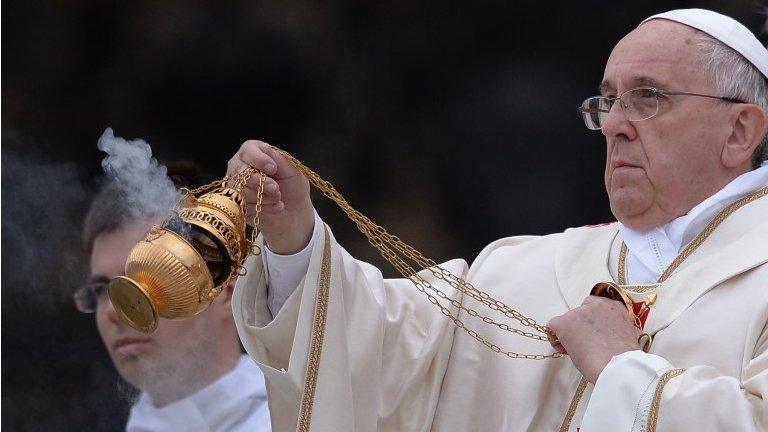
- Published15 February 2016
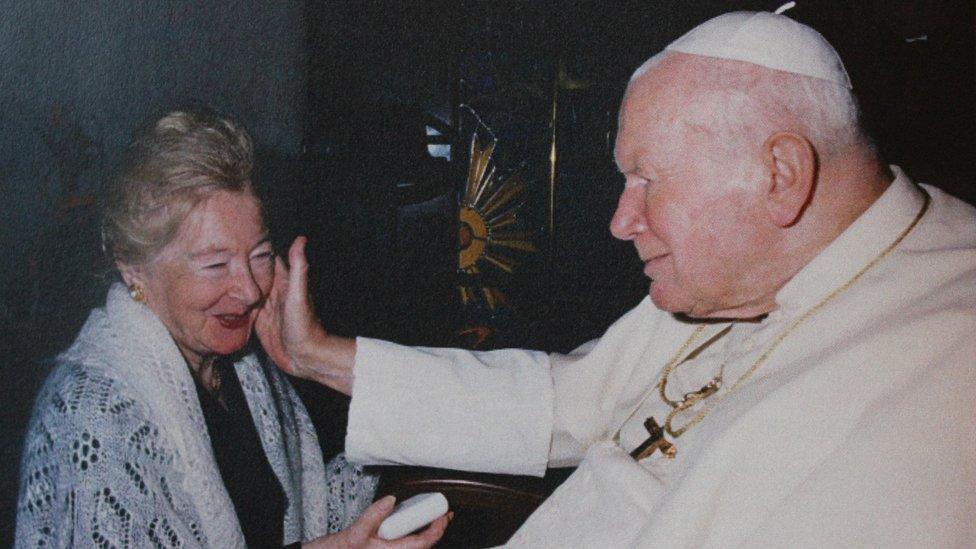
- Published27 December 2014

- Published24 April 2014
